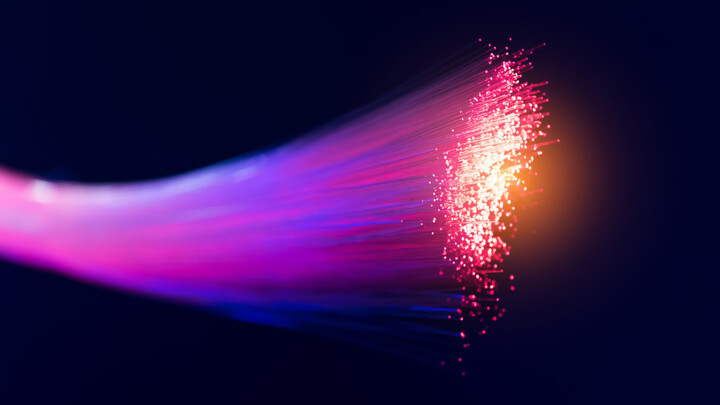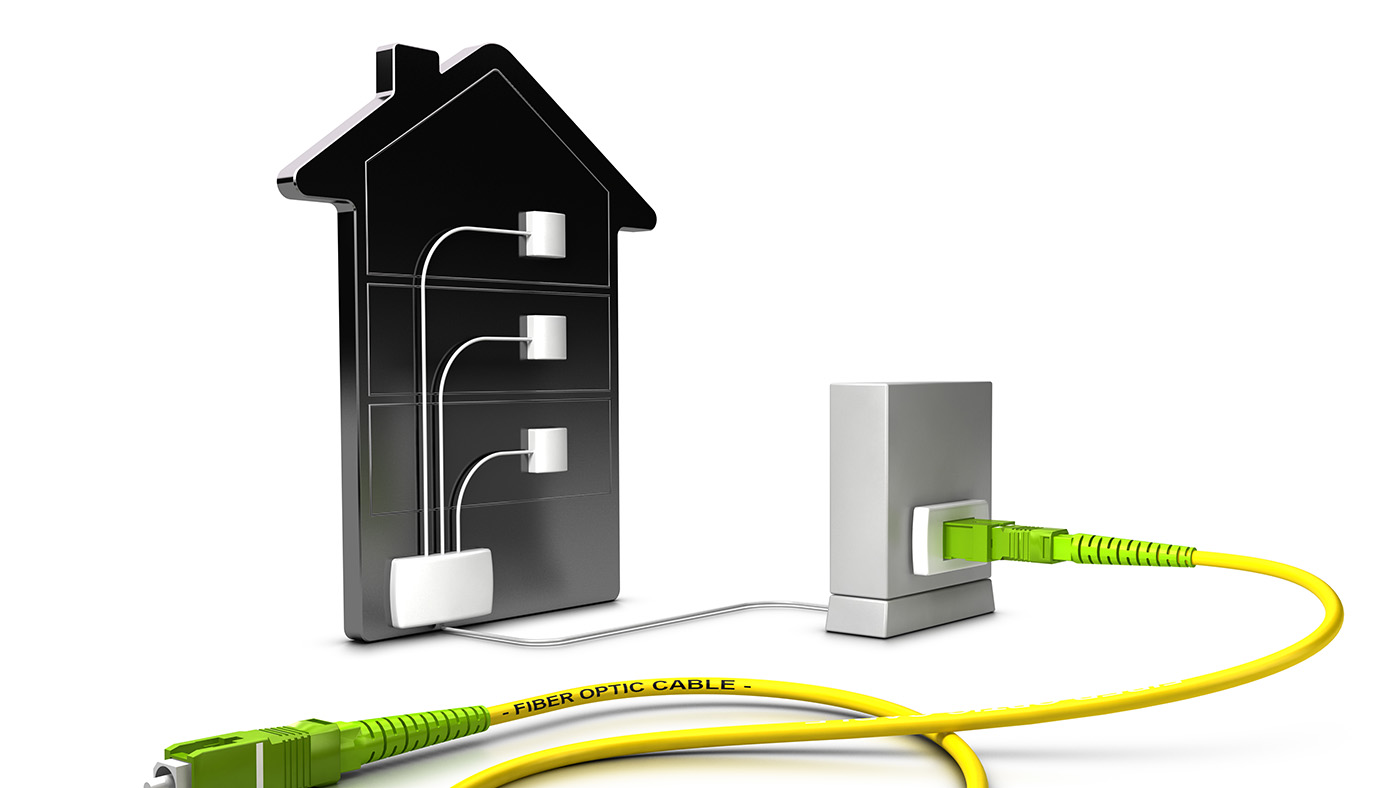CO₂ Savings in The Fiber Rollout – Which Installation Method is Best?
Alternative deployment methods for fiber optics can reduce the carbon footprint significantly, as Tobias Schubert from Corning outlines.

© kynny | istockphoto.com
The European Union wants everyone to have access to gigabit speeds by 2030. For this to work, the deployment of fiber optics must be driven forward enormously. At the same time, it’s critical that the expansion is as sustainable as possible. Fortunately, today there a number of alternative deployment methods that can supplement more traditional approaches to rolling out fiber.
Deutsche Telekom has made calculations, based on expert interviews and on-site visits, to evaluate the CO2 savings per kilometer of civil engineering compared with the former standard construction method (30 cm x 60 cm). The daily output, the respective “main equipment” and the production and transport of any essential products used (e.g., asphalt, bitumen, bentonite, liquid soil) were taken into account. Essential equipment, activities, and materials that are always necessary (for example, for house connection pits, cables, and drawing services) have not been considered.
“The use of alternative construction methods (e.g., reduced depth, trenching) can save between 1 and 6 tons of CO2 per km of civil engineering compared to the former standard (30 cm x 60 cm). In general, it can be said that there is a correlation between CO2 savings and the speed of the respective method.” says Sven Herring, Senior Cost & Value Engineer at Deutsche Telekom, summarizing the results.
Classic civil engineering or shallow and narrow?
Traditionally, telecommunications lines are laid underground. This involves digging a trench with excavators, in which the lines are then laid in new or existing pipe assemblies. In conventional construction, these trenches are 30 cm wide and at least 60 cm deep. However, there are other ways to lay more fiber faster, cheaper and with a smaller CO2 footprint during installation.
A reduced-depth method is when the cables are laid in the usual 30 cm wide trenches, but at a depth of only up to 45 cm – instead of 60 cm. In addition to the faster construction method and lower costs, the reduced-depth construction method saves up to 1,227 kg of CO2 per kilometer.
The savings potential is even greater by narrowing the trenches in the shallow and shallow-width construction methods. Here, the trenches are only 15 cm wide, laid at a depth of 45 cm. This reduces the CO2 impact per kilometer by almost 2.3 tons.
Trenching: Small trenches, big effect
Trenching offers an alternative to traditional civil engineering. This process serves as a collective term for various milling, sawing, and grinding methods in which narrow slots are cut into the ground. Cables can be laid in these slots by blowing them into the pipe assemblies.
While in the early days, the quality of this laying method often left much to be desired, work is now being done to establish certain quality parameters, because trenching offers many advantages. For example, the slots in trenching are between 7 cm and 45 cm deep and 80 mm wide. The method complies with the new DIN 18220 standard for trenching and requires fewer workers per meter of daily output. In addition, trenching can be done without empty conduits if special underground cables are used.
And it can be even narrower: with the minimal trench with buried cable composite, the slots can be reduced to as small as 1.7 cm x 29 cm and no additional pipes are required. The minimally invasive method virtually eliminates the need for road closures and time-consuming trenching work. As a result, a development area built using this method is completed around three times faster overall than using the conventional method, including the construction of service connections. Dispensing with additional pipes leads to less plastic consumption on the one hand and saves on costs on the other. In addition, Deutsche Telekom’s calculations show savings of up to four tons of CO2 per kilometer laid in the case of a minimal trench with buried cable composite compared with conventional civil engineering (30 cm x 60 cm).
Aiming high: aerial deployments
“From the point of view of the CO2 balance, the aerial construction method for laying fiber optic cables is by far the most favorable variant,” says Herring. This construction method is standard in southern European countries and the UK and offers many advantages. It makes connecting remote and sparsely populated areas easier and more lucrative. It also has a convincing CO2 saving of 6,469 kg per kilometer. In most cases, fiber optic cables are laid on wooden or telecommunications poles, most of which are already in place. A higher risk of interference due to wind breakage, etc., is countered by faster fault clearance because no underground construction is required.
Challenges for cables and components
Different installation methods bring with them diverse requirements for the cables laid. While cables are well protected in empty conduits underground in conventional civil engineering, they are exposed to the elements of nature above ground.
As a general rule, fiber optic cables must be resistant if they are laid outdoors:
- Temperature: outdoor cables should be able to withstand temperature fluctuations between -25 and 70 degrees Celsius without any problems.
- Weather resistance: Whether it’s ground frost or lightning strikes, cables must be immune to common weather phenomena. Fiber optic cables have a distinct advantage over their copper counterparts in this regard, as they contain no metallic conductors.
- Water and dirt: External factors such as water, dust and dirt must not have a negative impact on the functionality of the optical fibers.
Cables for minimal trenching applications are subjected to a greater direct load because they are not protected by conduits, unlike traditional trench or underground construction. These cables are specially designed for direct burial and are correspondingly more robust.
Cable manufacturers have developed suitable solutions for this. Corning, for example, has developed Thin-Film Bundled Drop (TFBD) cable, which speeds up installation during trenching. The cable contains fibers that offer particularly low attenuation and are also very flexible.
Cables for aerial installations should always be installed with sufficient cable reserve at the poles. In most cases, if the cable is torn from the pole by a fallen tree, it only needs to be re-hung. Solutions like Evolv by Corning are especially useful for aerial deployment as they can be installed single-handedly due to the push-and-click mechanism. This also improves safety when working at height on facades and poles.
Outlook
The fiber optic market will continue to grow strongly in the coming years. Alternative methods such as (minimal) trenching and aerial deployment will increasingly have to be used. These methods have the potential to save costs and materials, and to supply fiber to areas that are difficult to develop. They are also faster and more sustainable to roll out. The expansion can only succeed if the right cables and components are available for each method.
Tobias Schubert has many years of experience in the telecommunications industry and works in the Commercial division at Corning. Before taking on the role of Marketing Manager Major Accounts, he worked in various disciplines at Corning: in sales controlling, as sales manager for Central Europe and in marketing. Schubert studied economics at the University of Applied Sciences TH Wildau in Brandenburg, Germany.
Please note: The opinions expressed in Industry Insights published by dotmagazine are the author’s or interview partner’s own and do not necessarily reflect the view of the publisher, eco – Association of the Internet Industry.





